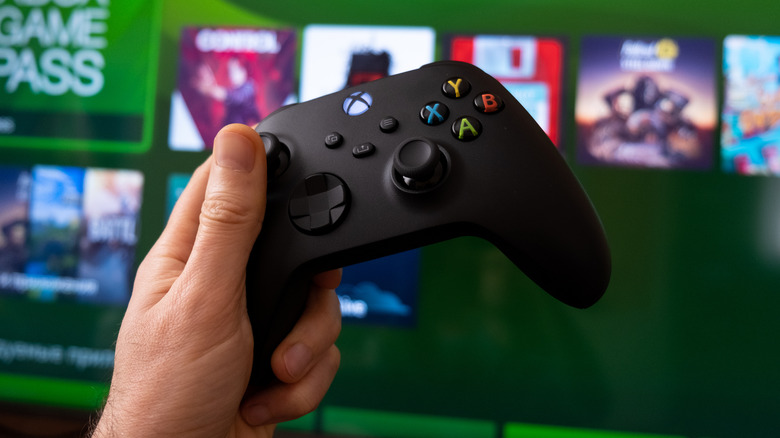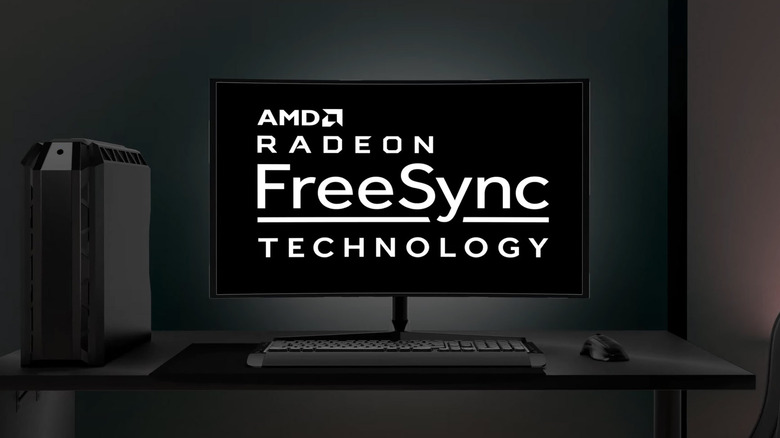

What Is AMD FreeSync?
source link: https://www.slashgear.com/806390/what-is-amd-freesync/
Go to the source link to view the article. You can view the picture content, updated content and better typesetting reading experience. If the link is broken, please click the button below to view the snapshot at that time.

What Is AMD FreeSync?
Attempting to play a video game without proper framerate synchronization between the gaming system and the display can leave you seeing frames that look like they're wrestling for dominance over the screen. You might describe it as kind of like a horizontal wave moving up and down the display where one part of the screen is clearly "behind" the other part of the screen.

This is an extremely common occurrence, and it comes down to the difference between "fixed refresh rates" and "variable refresh rates." A simple explanation goes like this: regular TVs and PC monitors are always operating at a constant refresh rate; for instance, a 60hz display refreshes exactly 60 times per second. No matter what, it refreshes at a set time, making zero changes or alterations to account for any variance in the number of frames it receives from a source signal — which in this case is whichever video game you're playing.
Meanwhile, the source signal can (and often does) relay frames to your display at a totally inconsistent rate. This is called a "variable refresh rate" or "variable frame rate." Your PC or gaming console's processing power defines the rate at which your frames are relayed. The mismatch in schedules between your source and your display is constant, and when things become totally out of sync, you end up seeing those missed frames that look like somebody is trying to slash your screen in half.
How does AMD FreeSync work?

Both NVIDIA and AMD have similar solutions to this issue of inconsistent syncing between source computer and monitor. NVIDIA G-SYNC works to enable "variable refresh rates" between NIVIDIA-supported GPUs and displays. AMD-supported GPUs and displays can achieve something similar to NVIDIA G-SYNC with a slightly more open and freely available solution called AMD FreeSync.
AMD FreeSync basically tells your FreeSync-enabled monitor or TV to speak to your source, given that your source has a compatible AMD GPU installed. This communication allows the two devices to operate on similar schedules. So instead of your display operating at a "fixed refresh rate," it refreshes exactly as fast as it receives a new frame. This way, it only displays the next frame when there's something new to display, which keeps things looking and feeling far smoother.
AMD FreeSync is also much more widely available in newer TVs, even supporting the latest Xbox consoles (including the Xbox One S and Xbox One X, all the way up to the Xbox Series S and Series X) if one is plugged into a FreeSync-enabled TV. This is in contrast to NVIDIA G-SYNC, which is really only suited for gaming PCs with a modern NVIDIA GPU, and only really works with a small number of monitors and only a handful of TVs by comparison.
How does AMD FreeSync differ from V-Sync?

Another solution to this frame rate scheduling issue is the synchronization system called V-Sync. V-Sync is effectively the inverse of AMD FreeSync. Instead of locking your monitor's framerate to the speed at which it receives a signal, V-Sync instead attempts to lock the signal to the speed at which your monitor refreshes. This isn't a clean way of doing things, because in some cases it pushes your gaming system's GPU to make concessions to meet that fixed schedule. That can result in jittery framerates where your game slows down and speeds up at unpredictable intervals, and it can also generate input lag.
V-Sync is useful when playing an older game on much newer hardware that can run the game at speeds far higher than 60 frames per second. V-Sync loses its usefulness with newer games that struggle to maintain a consistent refresh rate at 60 frames per second — generally understood to be the industry standard for display refresh rates at this moment in gaming history.
As such, having a way to ensure smooth synchronization between your display and your gaming system is important when playing games at even higher resolutions than 1080p; 4K gaming absolutely benefits the most from FreeSync, where performance on even the best PCs and consoles can still dip below 60 frames per second at times.
Recommend
-
 80
80
6日0点:LG 27UD58-B 27英寸 4K IPS显示器(3840×2160、FreeSync) 1949元包邮(需用券),来自什么值得买甄选出的京东优惠产品,汇聚数十万什么值得买网友对该网购产品的点评。
-
 39
39
-
 39
39
LG 34WK500-P 34英寸 IPS显示器 (2560x1080、21:9、99%sRGB、FreeSync) 1699元包邮,来自什么值得买甄选出的京东优惠产品,汇聚数十万什么值得买网友对该网购产品的点评。
-
 50
50
京东PLUS会员:LG 34WK500-P 34英寸 IPS显示器 (2560x1080、21:9、99%sRGB、FreeSync) 1649元包邮(需用券),来自什么值得买甄选出的京东优惠产品,汇聚数十万什么值得买网友对该网购产品的点评。
-
 49
49
14日0点、历史低价:LG 27UL550 27英寸 IPS显示器(4K、98%sRGB、HDR10、FreeSync) 1498元包邮,来自什么值得买甄选出的京东优惠产品,汇聚数十万什么值得买网友对该网购产品的点评。
-
 5
5
对标型号:27GN750面板型号:M270han03.0/LM270WF9价格:¥1350/1650分辨率:1920x1080刷新率:240Hz,可超频上280Hz附加产品和服务dp线:赠送x2运费:¥15升降旋转支架或机械臂:¥100
-
 5
5
G-Sync和FreeSync是否可以通过USB-C工作?可以,但还是有点复杂
-
 7
7
SAMSUNG 三星 27英寸 S61B 2K IPS 窄边框 旋转升降底座 FreeSync 电脑显示器 (S27B610EQC) 1489元(需用券)-聚超值...
-
 2
2
AMD Stops Certifying Monitors, TVs Under 144 Hz For FreeSync binspam...
-
 2
2
60 Hz is so 2015 — AMD stops certifying monitors, TVs under 144 Hz for FreeSync 120 Hz is good enough for consoles, but not for FreeSync.
About Joyk
Aggregate valuable and interesting links.
Joyk means Joy of geeK
